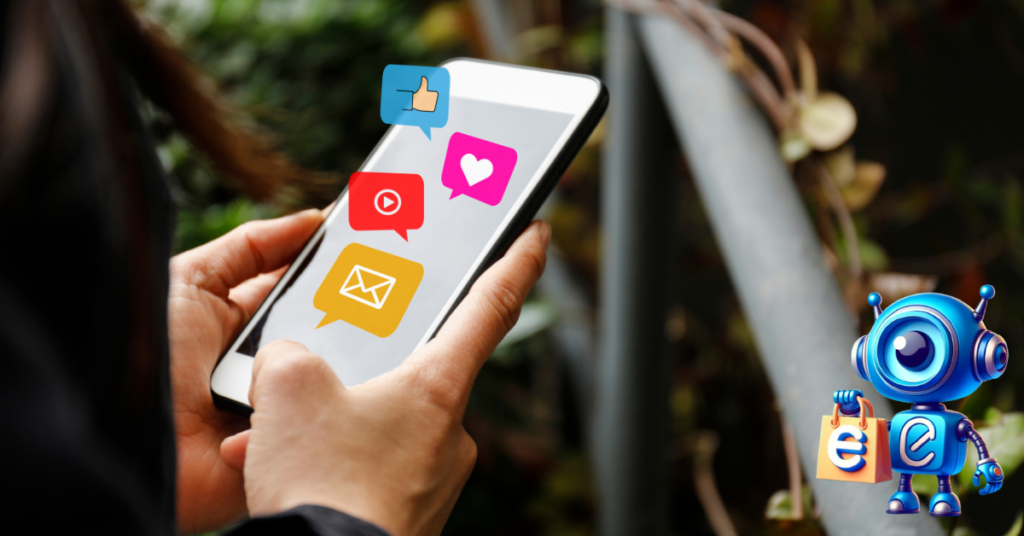Facebook automation works in simple steps, making conversion and engagement much easier while running digital marketing. Automating social media posts has become indispensable.
Facebook has a billion active users. Its open backend policy allows developers to integrate third-party automation apps via APs, making running and optimizing business on Facebook accessible and flexible.
Facebook has enabled automation tools to access its platform, which opens the door to more apps and tools for improving marketing and user interactions.
But how does Facebook automation work, and how do you deploy it for marketing?
This post will help you understand the mechanics of Facebook automation, how to exhaust all its features, and deploy the best practices for leveraging automated systems effectively.
Table of Contents
What is Facebook automation?
Facebook automation uses applications or software to manage activities without manual intervention.
Facebook automation aims to streamline repetitive tasks such as social media posting, responding to users’ messages, ads or campaign management, and other tasks.

Automation tools assist content creators, digital marketers, and entrepreneurs increase productivity and maintaining a consistent online presence; if deployed correctly, they enhance user engagement by providing timely interactions.
Through automation tools, Facebook has enabled its users to create detailed and targeted marketing plans to deliver personalized experiences at scale to their customers.
Understanding the Mechanics of Facebook Automation
Facebook automation works through bots and tools that undertake predefined user-defined tasks.
The tasks designed for automation tools can vary from simple posting and post-scheduling to elaborate advertisement targeting and customer service interaction management.
Facebook’s Automation Tools Features:
- Scheduling Posts: The most common form of automation on the Facebook platform is that users can create content, publish it, and schedule publications for future dates and times.
- Automated Responses: In Facebook Messenger, automation tools can fuel instant replies to users’ queries and automate away messages or greeting messages to engage users immediately on your page.
- Ad Campaign Management: Sophisticated tools exist for automatically creating, monitoring, and adjusting ad campaigns based on real-time data.
- Analytics and Insights: Automated in-depth reporting gives users insights into the performance of their posts on various metrics without manual data analysis for their ads or social media posts.
Third-Party Automation Tools:
Besides the native features Facebook provides, there are numerous third-party tools and apps with advanced automation capabilities, such as Ecommercebot, Buffer, and Sprout Social.
Third-party automation tools often offer more advanced automation options and seamless integration capabilities with social media platforms other than Facebook.
Chatbots:
Chatbots are a growing trend and play a significant role in Facebook automation. They increase interaction with users through AI by simulating human conversation and tone.
Many businesses use chatbots to help with customer engagements, provide instant customer service, take orders, assist with bookings, and guide users through complex website structures.
Setting Up Facebook Automation
Setting up Facebook automation starts with identifying repetitive tasks you could delegate to automation. Here’s a step-by-step process:
- Audit Your Tasks: List all activities related to Facebook management and set aside repetitive or time-consuming tasks that automation can help execute.
- Choose the Right Tools: Based on your social media needs, you can deploy Facebook features if they help you carry out the tasks or explore third-party tools that can fill in the gaps and improve your marketing and social media management.
- Configure Settings: Input your desired parameters and goals within the chosen automation tool to match your social media scheduling needs, response templates, or ad strategies. Configuring settings is essential to achieving your social media automation goals.
- Test and Tweak: Run your social media automation in a trial phase, observe and analyze the results, and make necessary adjustments to optimize performance for posts that underperform and scale the ones that are doing well in terms of conversions, engagements, or based on your ad or post objectives.
Benefits of Automating Facebook Activities
- Increased Efficiency: Facebook Automation can handle multiple repetitive tasks concurrently, saving valuable time. You can schedule posts on Facebook, run campaigns, and engage with your target audience simultaneously without spending your entire day online.
- Consistency: With Facebook automation, you can maintain posting frequency and consistency with content quality. This consistency boosts brand awareness and increases user engagement, trustworthiness, and credibility.
- Improved Targeting: Automation tools allow targeting specific demographics or interests based on the data collected from your Facebook audience. This targeting increases the likelihood of reaching potential customers or followers who are more likely to engage with your content.
- Time Management: By automating your Facebook tasks, you quickly save up time that can be spent on other essential tasks, such as content creation or analyzing performance metrics. It eliminates the need to do everything manually and monitor and allows you to focus more.
- Consistency in Online Presence: Automated scheduling ensures your Facebook page feed stays updated and active even when unavailable online.
- Data-Driven Decision Making: Facebook automation provides in-depth analytics and clarity needed to refine marketing strategies for your content.
- Enhanced User Experience: Immediate responses and interactions increase user satisfaction and engagement.
Potential Pitfalls and How to Avoid Them
The convenience of automation comes with its own set of challenges. One of the primary dangers is over-automation, which can make your Facebook profile seem robotic and impersonal.
To avoid such scenarios:
- Maintain a Human Touch: Ensure your automated responses and posts don’t replace genuine human interaction. Keep your voice authentic and occasionally interact personally with your audience.
- Monitor Regularly: Set aside time to review and monitor automated activities. Keeping a close eye helps identify and rectify any issues swiftly.
- Stay Updated on Policies: Facebook’s policies on automation change frequently. Stay up-to-date to ensure compliance and avoid penalties.
Best Practices for Facebook Automation
For effective use of Facebook automation:
- Create Quality Content: Even automated, your content should be engaging and valuable to your audience.
- Tailor Your Responses: Ensure automatic responses are as personable and specific as possible.
- Mind the Timing: Be conscious of when your audience is most active and schedule posts to maximize visibility.
- Leverage Segmentation: Use data to segment your audience for targeted ads and personalized messaging.
- Comply with Facebook’s Rules: Familiarize yourself with Facebook’s terms for the use of bots and automated systems to avoid sanctions.
- Monitor Trends and Feedback: Adjust your automation settings and strategies based on performance data and user feedback.
Read Also:
- Top 5 Ecommerce Chatbots For Merchants Selling Online
- How To Create Instagram Posts With AI (5 Easy Steps)
- Top 5 Shopify Auto Checkout Bots: Boost Online Sales
- Top 5 Best Shopify Bots For Boosting Your E-Commerce
- Ultimate Guide To Picking A Good Bot For Shopify Store
Facebook Automation and SEO
While primarily a social media tool, Facebook automation can complement your SEO efforts. Maintaining a regular posting schedule and engaging with users promptly can improve your business’s interactions and online visibility, indirectly boosting your SEO rankings.
However, it’s essential to ensure that automated posts are optimized for keywords and user engagement.
Posts should generate conversations, sharing, and traffic back to your website, all of which are signals that search engines like Google consider.
Conclusion On Facebook Automation Work
When used wisely, Facebook automation can propel your marketing efforts toward greater efficiency and success. It’s a powerful ally in the relentless pace of the social media world.
However, be cautious not to over-rely on automation at the cost of losing the personalized experience that users desire.

Remember that automation is a tool, not a replacement for human creativity and engagement. The goal is to balance productivity enhancement with maintaining a warm, authentic connection with your audience.
As you explore the world of Facebook automation, be curious, be adaptable, and, above all, be ready to harness its incredible potential.

